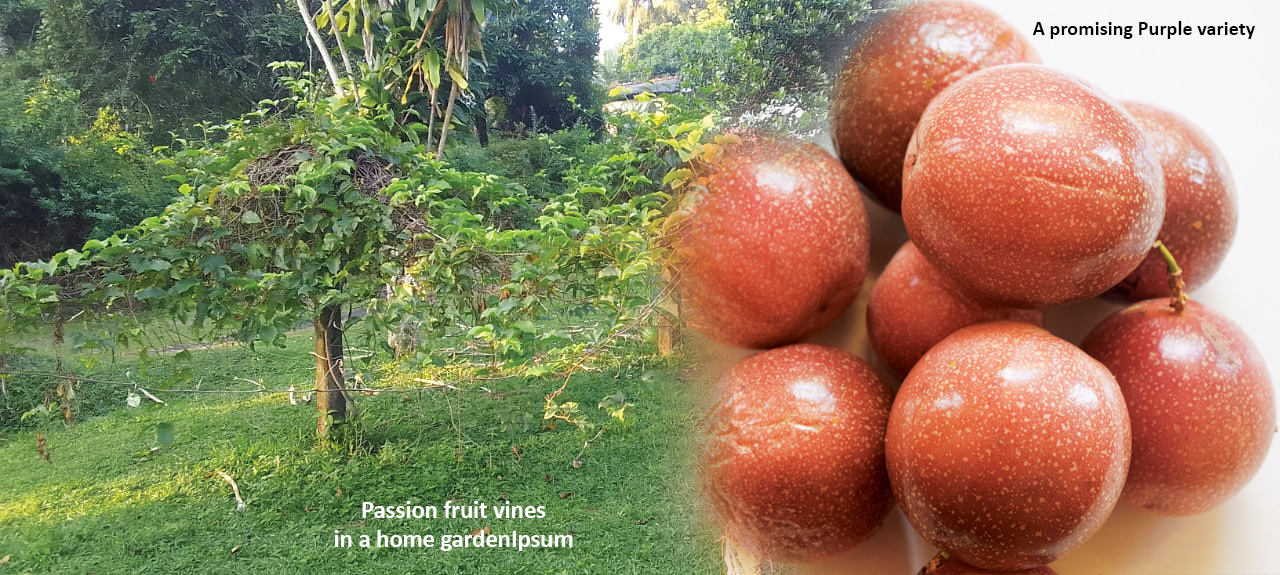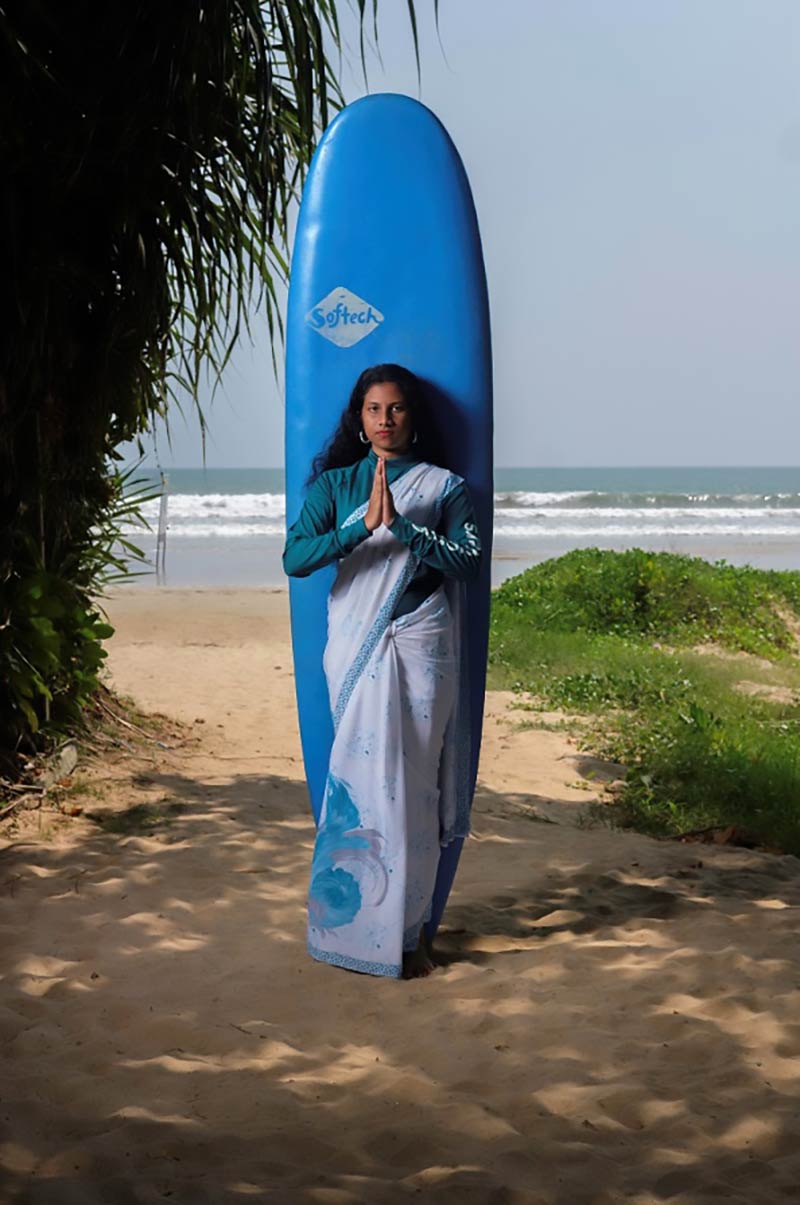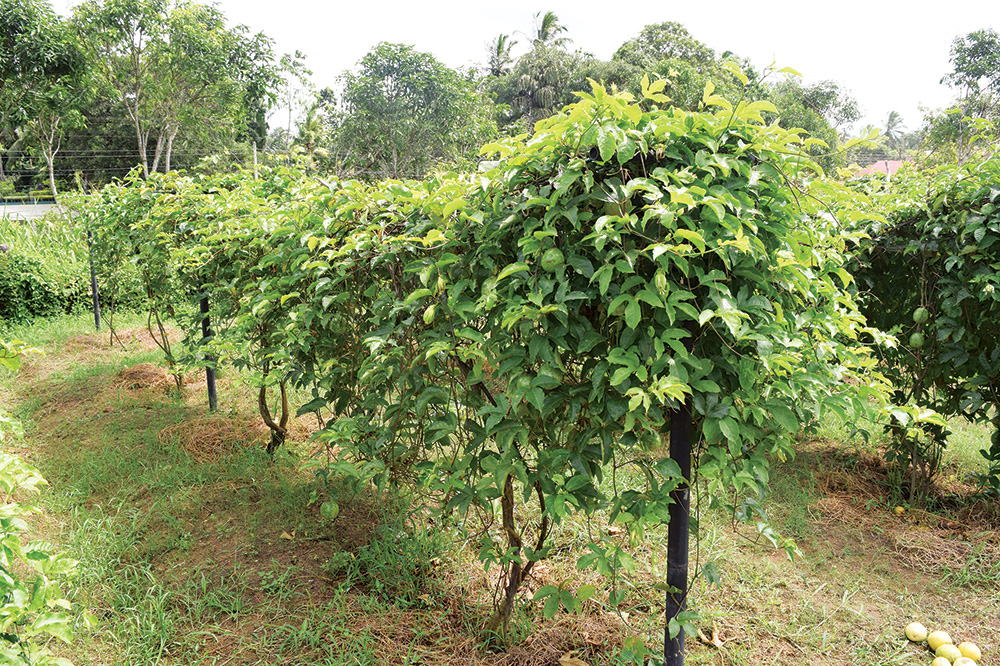Life style
Seasisters – breaking barriers, making waves

A photographic exposition on the occasion of the Paris2024 Olympic and Paralympic Games
Given the enormous focus on sports in France this year as the 2024 Summer Olympics are to be held in Paris and 16 other cities across France, the French Embassy to Sri Lanka and the Maldives and the Alliance Française de Colombo take part in the international photography project by the French photographer Emilien Buffrad, Sport Friendly: The Field of Diversity that seeks to redefine the classic values of sport, affirming that, regardless of sexual orientation or identity, gender or physical or social condition, there is a place for everyone in the realm of sports.
The exhibition portrays the SeaSisters, a group of local female surfers based in Weligama in Sri Lanka, whose initiative is to break the boundaries set by their backgrounds, society and the surfing eco-system by empowering local women and girls to swim and surf.
Through the creative collaboration of Munira Mutaher, a female Sri Lankan art/ humanitarian photographer, the homogeneous photographic portraits of the SeaSisters were the submission from Sri Lankan to this global photographic project. The exhibition will be launched on Saturday the 29th of June with a panel discussion that highlights how SeaSisters exemplify the concept of the inclusivity in sports.The exhibition will give to show 15 photographies, each accompanied with a written testimony.
Life style
Passionately Fruity

Filled with crunchy seeds, passion fruit, locally known as wel dodam is a year-round fruit, rich in nutritional properties. With renewed interest among cultivators for its expansion, a strong value-chain is the need of the hour to maximize its consumption and the export potential.
BY RANDIMA ATTYGALLE
Named for the features of its flowers which resemble different symbols of Christ’s crucifixion such as the crown of thorns, passion fruit, also called granadilla, is native to Brazil. The Inca people are known to have cultivated passion fruit plants in the Peruvian region around AD 1000, and the mashed fruit combined with water has been consumed in Peru, as a nutritious drink for many centuries. Today the fruit is also grown in Australia, Hawai, Venezuela, Thailand, New Zealand, South Africa and Columbia. Passion fruit is locally known as wel dodam, the name deriving from the vines (wel) of the plant. Although the exact origin of this year-round crop in Sri Lanka is vague, it is believed to have been introduced to the island during the Portuguese occupation. Passion fruit leaves are a popular base for Sri Lankan mellum.
Yellow passion fruit
The genus Passiflora includes more than 350 species of sub-tropical vines, but few of them are grown for their fruits. There are two forms of passion fruit commercially grown for their fruits; the purple-skinned Passiflora edulis f. edulis Sims and yellow-skinned Passiflora edulis f. flavicarpa Deg. “Although the purple variety is sweeter and superior in taste, compared to the yellow, what is more in demand for commercial purposes and for value-added products such as cordials, jams and desserts is the yellow passion fruit which is considered to be either a mutant of the purple fruit or a cross-bred one with another variety,” says the Principal Agriculture Scientist (Plant Breeding) of the Fruit Crops Research and Development Institute (FRDI), Indrani Kalubowila.
Given its availability round the year and the demand for it in the export market, the yellow passion fruit is a popular crop among cultivators today, points out Kalubowila. “While the purple variety is largely confined to the upcountry intermediate zone in the island, yellow fruit has now expanded beyond this zone to other areas in the country such as Dambulla, Kurunegala, Matale, Kandy Embilipitiya, Hambanhota and Kilinochchi. A yellow passion fruit weighs around 135gms as the fruit is larger than the purple type which weighs around 100gms a fruit. Its dark yellow juice, pleasant aroma and rich flavor make it ideal for industrial purposes.”
Commercial cultivation
Although passion fruit was grown in many home gardens, commercial cultivation of passion fruit began here at home in early 1970s in the Kalutara and Galle areas. As documented in the paper, ‘Passion fruit industry in Sri Lanka- A Report on Past and Current Status,’ by Rohana Wijesekera (1992), ‘youth farm colonies were used for this and they were provided with subsidies for cultivation. Their harvest was taken by the Marketing Department (MD) mainly for export purposes.’ Due to the increase in supply to the world market by other competitors, Sri Lankan passion fruit lost its export market and the farmers were paid very low prices. ‘In some cases, collectors refused to buy the passion fruit and the farmers faced problems in marketing. Some farmers used their land for other perennial crops such as tea, rubber and cinnamon which gave a steady income,’ documents Wijesekera.
Horana Gold
Following the release of Horana Gold variety in 2017 by the FRDI, the demand for the yellow passion fruit was once again renewed among local cultivators. However, its export potential is still not fully tapped, points out Kalubowila who was among the scientists responsible for the research and release on this high-yielding yellow passion fruit variety. “Horana Gold is an improved variety, developed by crossing multiple parental lines; what is known to be a ‘composite variety’. Therefore, it yields a very good harvest and today there is a great demand among entrepreneurs for this.”
 Best practices for a bumper harvest
Best practices for a bumper harvest
Today around 600 hectares of yellow passion fruit is grown in the country, says Kalubowila. “Although 50 tons of fruit can be generated per hectare, only about 20 tons are generated due to bad agricultural practices,” points out the scientist. The fruit thrives in a temperature of 20-30C and fertile soil with higher Ph levels. “The best yield of yellow passion fruit comes from areas such as Bandarawela, Welimada and Badulla as these upcountry intermediate dry zones meet the ideal climatic requirements despite the vines reaching the reproductive stage somewhat later compared to those in wet and humid zones.”
Although passion fruit can be grown as an inter-crop, for an optimum harvest, it is promoted as a monocrop. “Full sunlight is critical for flowering and when it’s a monocrop this advantage is at its fullest,” explains Kalubowila who goes onto note that the ideal planting season is between September and October when there is ample rain. “However, farmers should assure that the soil doesn’t get water-logged and that there are proper drainage systems; if not the vines will be rotten. By March, the flowering season begins and within a short time, a bumper harvest can be fetched, provided that the farmers follow good agricultural practices which are offered by the FRDI. Farmers can get quality passion fruit seeds from the seed centres of our regional offices.”
Variety improvement
FRDI is currently engaged in research for the improvement of passion fruit varieties and the development of technology packages for passion fruit cultivation. “Areas such as Moneragala, where there is sufficient land for cultivation yet stress-induced, in terms of climate and crop disease, requires improved varieties of passion fruit which are resistant to these stresses. We are presently researching into such varieties. Moreover, we are also in the process of improving the purple variety- to make the fruit larger.”
The T-trellis systems which is now promoted for passion fruit cultivation has largely replaced the single trellis system used for the vines to climb. Kalubowila says that this new T-trellis method with three wires has increased the productivity by 50% more. Passion fruit is also a lucrative crop which can fetch about Rs. 450 per kilo today. “Although there is great enthusiasm for the cultivation of this fruit which is rich in its nutritional value, there is still not sufficient dialogue created around it to create a strong value chain for it,” observes Kalubowila who also calls for a better national plan to expand its export market and to promote its local consumption. Today local passion fruit is largely exported to Middle Eastern countries. “Passion fruit is a rich source of vitamins A and C, and studies have shown that it can kill cancer cells in vitro. In certain countries, cancer patients are given a glass of passion fruit juice as a dietary supplement” notes the scientist.
Artificial pollination
Although passion fruit is naturally pollinated by carpenter bees (Xylocopa pubescens), fruit set (transition from flower to young fruit), fruit filling, fruit weight, and overall yield can be significantly improved through artificial pollination. This pollination technology has been effectively developed by the FRDI. “Seeds for cultivating the ‘Horana Gold’ variety are produced by the Department of Agriculture. Typically, 15–20 grams of seeds are sufficient to produce plants for one acre. However, farmers occasionally report issues with low seed germination rates. To address this, FRDI has developed a simple and effective technology to enhance seed germination rates,” concludes Kalubowila.
(Pic credit: Fruit Crops Research and Development Institute)
Life style
220 years of love

Mount Lavinia Hotel, Sri Lanka’s most iconic destination for romance, hosted an interactive briefing recently to mark a significant milestone in its history – “220 years oflove”. This year-long celebration commemorates the hotel’s deep roots in Sri Lanka’s romantic heritage, beginning with the legendary love story of Sir Thomas Maitland and Loveena in 1805.
The discussion featured insights from three panelists: Sanath Ukwatte, Chairman of Mount Lavinia Hotel Group; Anura Dewapura, Chief Operating Officer of Mount Lavinia Hotel Group; and Ranga de Fonseka, AVP of Merchant Business & Promotions (Nations Trust Bank). The event provided a platform for both historical reflection and contemporary perspectives on the hotel’s ongoing legacy as a romantsic destination.
A Storied Legacy of Romance
Sanath Ukwatte, Chairman of Mount Lavinia Hotel Group, captivated the audience with the story of Sir Thomas Maitland, the British Governor of Ceylon, who fell in love with the local beauty, Loveena, upon his arrival in 1805. Their love story and the eventual conversion of the Governor’s Mansion into a hotel have helped cement Mount Lavinia Hotel as a premier destination for couples seeking romance. Since then, the hotel has become an iconic location for weddings, dates, and romantic getaways, attracting couples from Sri Lanka and around the world.
A Premier Wedding Destination
Anura Dewapura, COO of Mount Lavinia Hotel, shared the hotel’s vision of continuing to provide exceptional romantic experiences. “Unlike any other hotel, Mount Lavinia Hotel offers not only the paradise beach but also a rich history and unique character that sets us apart as a true symbol of romance. Celebrating 220 years of love is about cherishing our legacy while also looking forward to creating unforgettable memories for future generations of couples. From the captivating beach to grand ballroom, every corner of the hotel is crafted to inspire love and joy. We are thrilled to offer special promotions that help couples turn their dream weddings into reality, and our partnership with NTB Amex Cards ensures that their journey begins with ease and elegance”, Dewapura stated.
To mark this special anniversary, Mount Lavinia Hotel is offering a 20% discount on wedding bookings made in 2025, inviting couples to celebrate their union in one of Sri Lanka’s most picturesque and romantic locations.
Mount Lavinia Hotel also announced the launch of its newest wedding menus, offering exceptional value for money while maintaing the hi220 years of loveghest standards of quality and elegance.panelists Contact Dilshi Fernando,Manager PR and Marketing Communications for inquries . The menus include specially curated Hindu and Islamic wedding packages, designed to cater to the diverse cultural and culinary needs of couples. Led by Shamal Weerabahu, Director of Catering, Events, and Banquet Operations, and Hareendra Hangawatte, Assistant Director of Catering, the hotel’s expert catering team is dedicated to turning every couple’s wedding vision into reality. With their wealth of experience and attention to detail, they are fully equipped and ready to create unforgettable dining experiences that will complement the beautiful settings of Mount Lavinia Hotel, making each wedding celebration truly special.
Easy Payment Options with NTB Amex Cards
In an effort to make the dream wedding more accessible, Mount Lavinia Hotel has partnered with NTB Amex Cards to offer couples a unique opportunity. AVP of Merchant Business & Promotions (Nations Trust Bank), explained, “We are thrilled to partner with Mount Lavinia Hotel to provide a 0% interest easy installment payment facility for weddings booked at the hotel. With the ability to pay in 12-month installments, we hope to ease the financial planning for couples and allow them to focus on enjoying their special day.”
This partnership ensures that couples can make the most of Mount Lavinia Hotel’s stunning offerings without financial strain, providing an innovative way to enjoy with added convenience.
A Toast to “220 Years of Love”
The 220th anniversary celebrations will continue throughout 2025 with a series of romantic experiences and promotions designed to make each couple’s visit to Mount Lavinia Hotel unforgettable. Whether it’s a wedding, anniversary, or special date night, Mount Lavinia Hotel remains a beloved landmark in Sri Lanka’s romantic history.
Life style
The Love Story of Sir Thomas Maitland and Lovina:A Forbidden Romance

In 1805, when Sri Lanka was still known as Ceylon, Sir Thomas Maitland, a distinguished British military general, arrived on the island to assume his duties as the second British Governor. Known to the locals as “King Tom,” he was a man of great power and authority, but he quickly grew dissatisfied with the accommodations provided to him upon his arrival. Seeking a more comfortable and grand residence, he found a beautiful, secluded spot in the village of Galkissa, not far from the capital, Colombo. There, perched on a promontory overlooking the Indian Ocean, he began constructing a magnificent mansion that would become a symbol of his status and power.
However, as the mansion took shape, it was not just the building that captured his attention—it was a dancer who would change his life forever.
Lovina Aponsuwa, a beautiful mestizo dancer of Portuguese and Sinhalese descent, was the lead performer in her father’s dance troupe. She was a striking young woman, with long flowing black hair and large, expressive hazel eyes that seemed to capture the essence of the island’s vibrant culture. Lovina came from the Rodi community, a marginalized caste within Sinhalese society, looked down upon by the higher castes. Despite her lowly status, she possessed a beauty and grace that enchanted all who saw her perform.
As Lovina danced for a gathering at the Governor’s mansion, Sir Thomas Maitland was captivated by her elegance and allure. It was more than just her beauty that fascinated him—it was the way her movements seemed to speak directly to his soul, offering an escape from the rigid constraints of colonial society. As Lovina’s dance filled the room, the imposing Governor found himself falling under her spell, and an undeniable attraction sparked between them.
Lovina, too, found herself drawn to Sir Thomas. Though they came from vastly different worlds—he a powerful British official, she a poor dancer from a low caste—there was a mutual respect that blossomed into a secret and passionate love affair. In the secluded mansion by the sea, away from the prying eyes of colonial society, their romance flourished. Lovina became a regular guest at the Governor’s mansion, and their clandestine meetings continued for years. Their love was one that defied societal norms—one that bridged the gap between colonial power and the oppressed local communities.
In an act of profound affection, Sir Thomas named his grand residence “Mount Lavinia” after her, immortalizing her name in the mansion’s identity. The house, once a mere symbol of his power, now held a deeper, more personal significance for him. It was a place of refuge and escape from the pressures of his role as Governor, where he could find solace in Lovina’s company.
But their love story was destined to remain hidden from the world. Sir Thomas, despite his deep affection for Lovina, was still a man of the British Empire, bound by its rules and expectations. Their relationship was a stark contradiction to the colonial system that dictated separation between the ruling British elite and the local population. Lovina’s caste—her very identity—was something that could not be ignored in the strict, racially divided society in which they lived.
As their romance continued to blossom, the inevitable happened—their secret was discovered. Word of the affair began to spread, causing a scandal among the British expatriates in Ceylon. The societal pressures and moral boundaries of the time proved too strong, and Sir Thomas was forced to face the consequences of his forbidden love.
In 1819, after the affair had been exposed, Sir Thomas was summoned back to Britain and transferred to Malta, where he continued his duties as a military leader. The departure was heart-wrenching for both Sir Thomas and Lovina. To show his regard for her, Sir Thomas gifted Lovina a large piece of land in Attidiya, a village away from Galkissa, as a token of his appreciation and affection. Despite the distance, Lovina’s name would always be linked to the mansion he had built and named in her honor.
Though the love affair between Sir Thomas and Lovina ended with his departure, the memory of their connection endured. Lovina’s descendants are believed to have lived near Mount Lavinia for generations, and her legacy lives on through the mansion that bears her name. The story of their passionate and forbidden love remains a cherished part of the island’s history, a testament to the power of love that transcends boundaries, even in the face of societal constraints.
While the romance between Sir Thomas Maitland and Lovina may have ended with his departure, the mansion he built and named after her stands as a lasting tribute to their love, forever immortalized in the heart of Ceylon’s colonial past.
In the early 20th century, the surrounding village, once known as Galkissa, was modernized and renamed Mount Lavinia, honoring the beautiful dancer who captured the heart of a British Governor. By 1920, the mansion had been transformed into a hotel, which became known as the Mount Lavinia Hotel.
Today, the Mount Lavinia Hotel stands as a symbol of Sri Lanka’s rich history, blending colonial heritage with modern hospitality. The story of King Tom and Lovina continues to be woven into the fabric of this historic landmark, offering guests a glimpse into the past while enjoying the luxurious comfort of one of Colombo’s most iconic hotels.
-

 Features7 days ago
Features7 days agoAKD faces challenging year ahead
-

 Editorial7 days ago
Editorial7 days agoA kiri-kekiri issue
-

 Sports7 days ago
Sports7 days agoSt. Sebastian’s dominate at Bambalapitiya
-

 Features6 days ago
Features6 days agoThey, too, had a ball …Down Under
-

 News4 days ago
News4 days agoReshuffle of senior cops on the cards
-

 Editorial5 days ago
Editorial5 days agoBribe-gate and other unsolved plots
-

 Editorial6 days ago
Editorial6 days agoMessages and subtexts
-

 Business6 days ago
Business6 days agoCCPI-based headline inflation continued to remain in negative territory in December 2024













